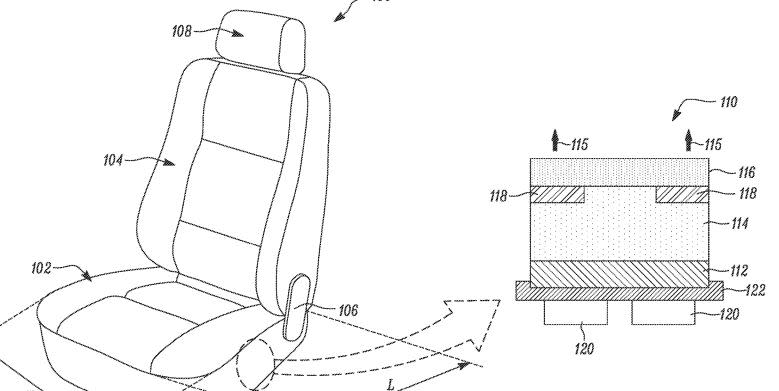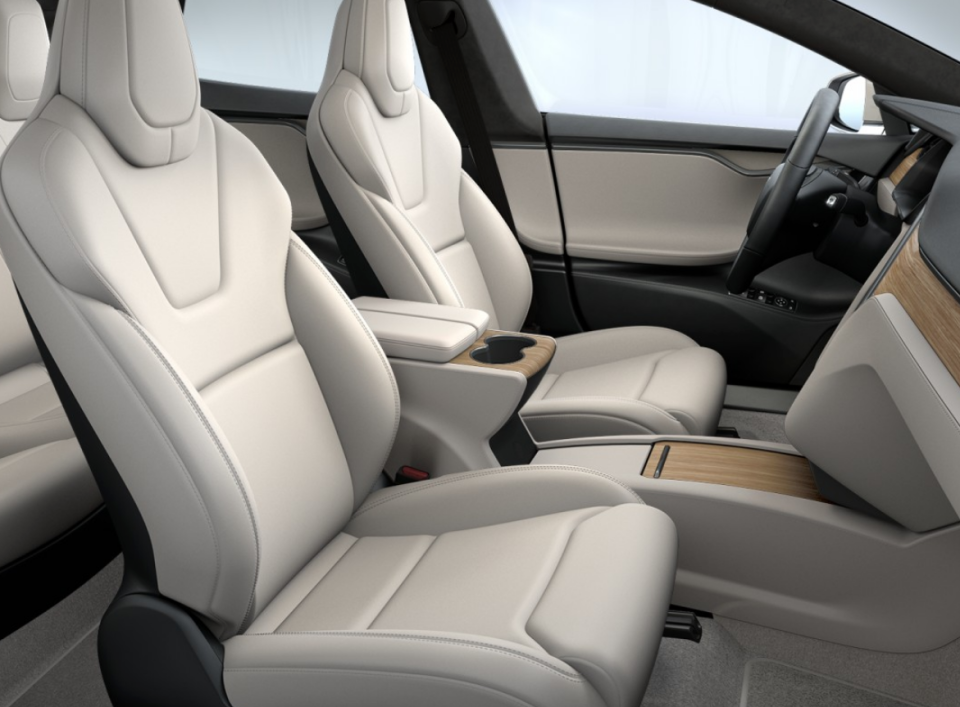Tesla Patents New Way to Heat and Cool Your Rear End

Tesla has filed a patent application for a new way to heat and cool car seats.
The system involves using liquid to heat as well as cool seats, using a multilayer seat design.
It's supposedly leakproof, to answer your first question.
Let's face it, heated and ventilated seats are pretty awesome. Now the ever inventive folks at Tesla have come up with a new way to approach them that could reach the market in the near future.
Just a few weeks ago, C/D reported on a windshield wiper system patent that Tesla filed. With this new patent, instead of worrying about occupant safety and outward visibility, Tesla is more concerned about how quickly and effectively it can heat and cool the human gluteus maximus. Tesla's latest wacky and creative new idea was published by the U.S. Patent and Trademark Office on September 29.

Traditionally, heated and ventilated seats are temperature controlled by two different systems. Seats are heated with a series of resistors that warm up when an electric current is passed through them. More current means more heat, which is how the temperature is controlled. The heating element is embedded in the seat so that, when the resistors heat up, the seat bottom and, in some cases, the seatback, steering wheel, or armrests begin to feel warm to the touch. Seats are ventilated through the use of a fan under the seat cushion. When the ventilated-seat function is selected, the fans turn on. The faster the fan spins, the more air that's moved away from the seating surfaces.
Tesla's idea is to have seats be both liquid heated and cooled. The new design involves multiple layers within the seat; the top layer is the one that the passenger sits on, under which is an intermediate fluid layer surrounded by yet another layer to contain the fluid. The fluid is circulated within the intermediate layer by a pump to ensure both the seat bottom and seatback are evenly heated and cooled, without one spot getting too hot or cold.
Within the intermediate layer, there exists a distribution layer, which is the heating and cooling element. When it's activated, the liquid will either heat up or chill. We can’t tell from this patent application what, exactly, is going to be used as the distribution element or as the liquid, but we can make some guesses. The distribution element will probably be made of some sort of metal or metallic compound, which is conductive to heat and can be cooled with A/C refrigerant, which is how the air in a car is cooled. The liquid that is being heated up or cooled down is probably more of an aqueous gel, similar to what is found in hot and cold packs, rather than water.
You may be wondering how someone could sit on such a seat without bursting the intermediate layer and ending up with a pair of damp pants. Tesla has a solution for that as well: conduits and supports to ensure proper flow throughout the system without the risk of a leak, which would be a pain to fix.
The reason for Tesla's change isn't entirely for the sake of passenger comfort, although actively cooled seats have the potential to be much more effective than today's ventilated seats, and could also operate more quietly.
We'll be interested to see if this patent makes it into production and how comfortable and effective such seats actually are.
You Might Also Like

